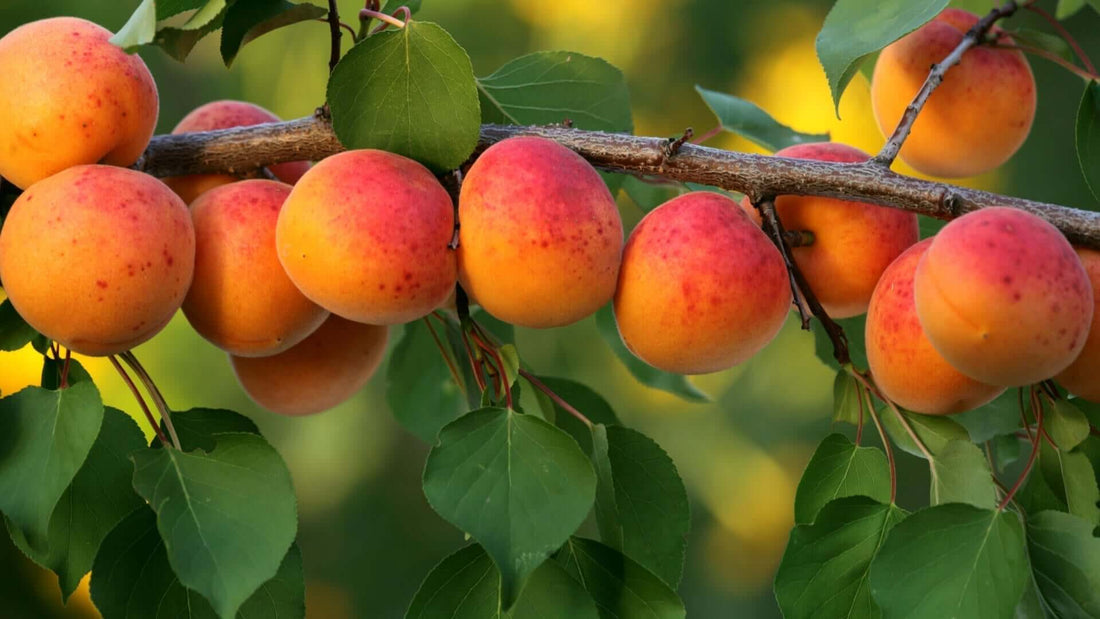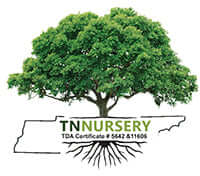
Fruit Trees: A Bounty of Nature's Delights
Share
Not Your Average Fruit Trees
Fruit trees are a cherished component of our natural landscape, offering picturesque beauty and a bountiful supply of delectable fruits. Among the diverse fruit-bearing trees, the Moonglow Pear, Apricot, Pawpaw, and Persimmon trees stand out for their unique characteristics and contributions to our culinary and ecological worlds.
Moonglow Pear Trees: Sublime Beauty and Flavor
Moonglow Pear Trees (Pyrus communis 'Moonglow') is a testament to the artistry of nature. These deciduous trees showcase a symphony of colors throughout the seasons, with white blossoms adorning their branches in spring and vibrant foliage in shades of green and gold that turn russet in the fall. Beyond their ornamental charm, Moonglow Pears offers delectable fruits with a crisp texture and sweet, juicy flavor. These pears are ideal for eating fresh but also excel in cooking, baking, and preserving due to their low acidity and rich aroma.
Apricot Trees: Early Bloomers of Spring
Apricot trees (Prunus armeniaca) are a true herald of spring. Their delicate pink or white blossoms that emerge even before the leaves add a touch of elegance to any garden or orchard. Native to regions of Asia, apricots have been cultivated for thousands of years for their luscious, velvety-skinned fruits. Apricots are known for their slightly tart yet sweet flavor, which makes them a versatile ingredient in sweet and savory dishes. From jams and preserves to tarts and salads, apricots grace our tables with their distinctive taste and vibrant hue.
Pawpaw Trees: America's Forgotten Fruit
Pawpaw trees (Asimina triloba) have a unique place in American history and ecology. Native to the eastern United States, these trees were once an essential part of the diet of Native American tribes and early settlers. The pawpaw fruit resembles a tropical custard, with creamy flesh and a flavor profile that blends banana, mango, and melon notes. Despite its delectable taste, the pawpaw remains relatively obscure due to its delicate nature, making it challenging to transport and store. In recent years, however, there has been a growing interest in pawpaws among enthusiasts and local food movements, leading to a renewed appreciation for this forgotten fruit.
Persimmon Trees: A Dual Delight
Persimmon trees (Diospyros) are distinguished by their dual personalities, with two main varieties taking center stage: astringent and non-astringent. Astringent persimmons, such as the Hachiya variety, are known for their mouth-puckering nature when unripe but transform into honey-sweet treats when fully ripe. Non-astringent persimmons, like the Fuyu variety, are enjoyable even when firm, offering a crisp texture and a sweet, mild flavor reminiscent of a mix between a mango and a pear. These trees often grace landscapes with striking orange fruits that persist into winter, adding a splash of color to the colder seasons.T
Cultivation and Care
Cultivating fruit trees requires careful consideration of their specific needs. Proper site selection, soil preparation, and adequate spacing are vital for healthy growth and optimal fruit production. Regular pruning not only shapes the trees for better sunlight penetration and air circulation but also encourages the development of solid branches capable of supporting the weight of the fruit. Each type of fruit tree has its unique requirements. Moonglow Pear Trees benefit from well-drained soil and total sun exposure, while Apricot Trees thrive in slightly alkaline soil and a sunny location. Pawpaw Trees, often found in the wild understory, appreciate partial shade and moist, fertile soil. Persimmon Trees, on the other hand, are adaptable and can tolerate various soil conditions, though they flourish in well-drained soil and ample sunlight.
Fruit trees are a testament to the beauty and generosity of the natural world. Moonglow Pear Trees, Apricot and Fig trees, Pawpaw Trees, and Persimmon Trees each contribute their distinct flavors, appearances, and histories to the tapestry of our environment. Whether cultivated for their delicious fruits or admired for their ornamental value, these trees enrich our lives in more ways than one. As we nurture and appreciate these trees, we enjoy their harvest and participate in a time-honored tradition that connects us to the land and its abundance.
